This buttery, two-layer classic yellow cake recipe is light and fluffy with tight, moist crumbs. Although it’s a traditional birthday treat, it’s perfect for any occasion!
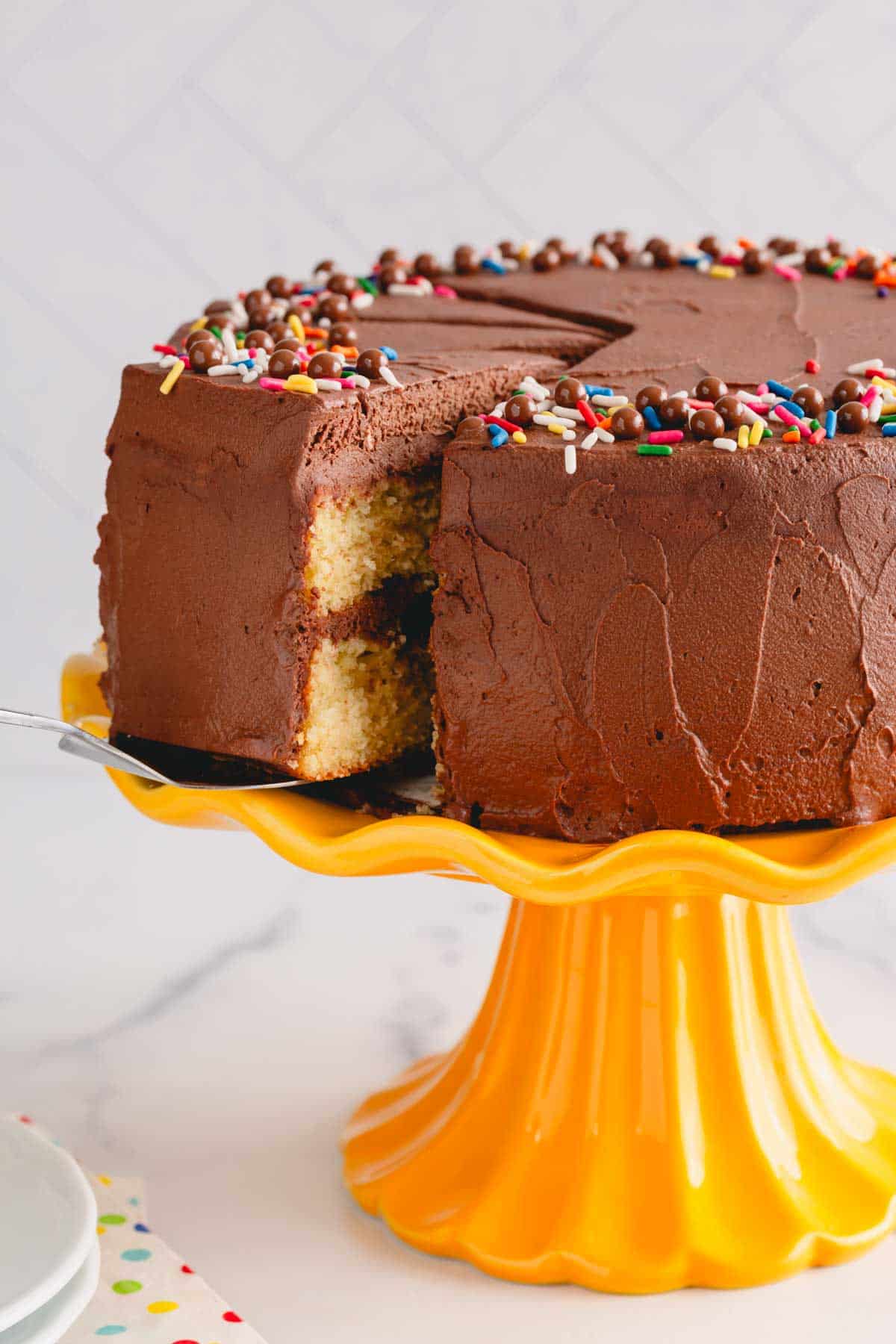
Table of Contents
- Why you’ll love this yellow cake recipe:
- Recipe Testing Notes:
- What is the creaming method?
- Yellow Cake vs Vanilla Cake vs White Cake:
- Key Ingredient Notes:
- How to make this cake recipe:
- More Yellow Cake Frosting Ideas:
- Tips for Success:
- Make-Ahead Tips:
- Storing Tips:
- Yellow Cake FAQs:
- More Cake Recipes:
- Classic Yellow Cake Recipe
Pin this now to find it later
Pin ItWhy you’ll love this yellow cake recipe:
If you make this classic yellow cake for your family and friends, I assure you, they’ll feel super special and eat every last crumb!
This cake is impossible to resist, with its stunning golden color and rich, flavorful taste. It’s a real showstopper!
- Flavor – Yellow cake is sweet and buttery with a decadent, custard-like flavor.
- Texture – Once baked, the cake is moist and tender with a velvety, melt-in-your-mouth feel.
- Versatile – While I love topping yellow cake with my go-to dark chocolate mousse frosting, you can frost this recipe with any frosting your heart desires!
The next time you celebrate a birthday, skip the boxed cake mix, and make a homemade yellow cake instead!
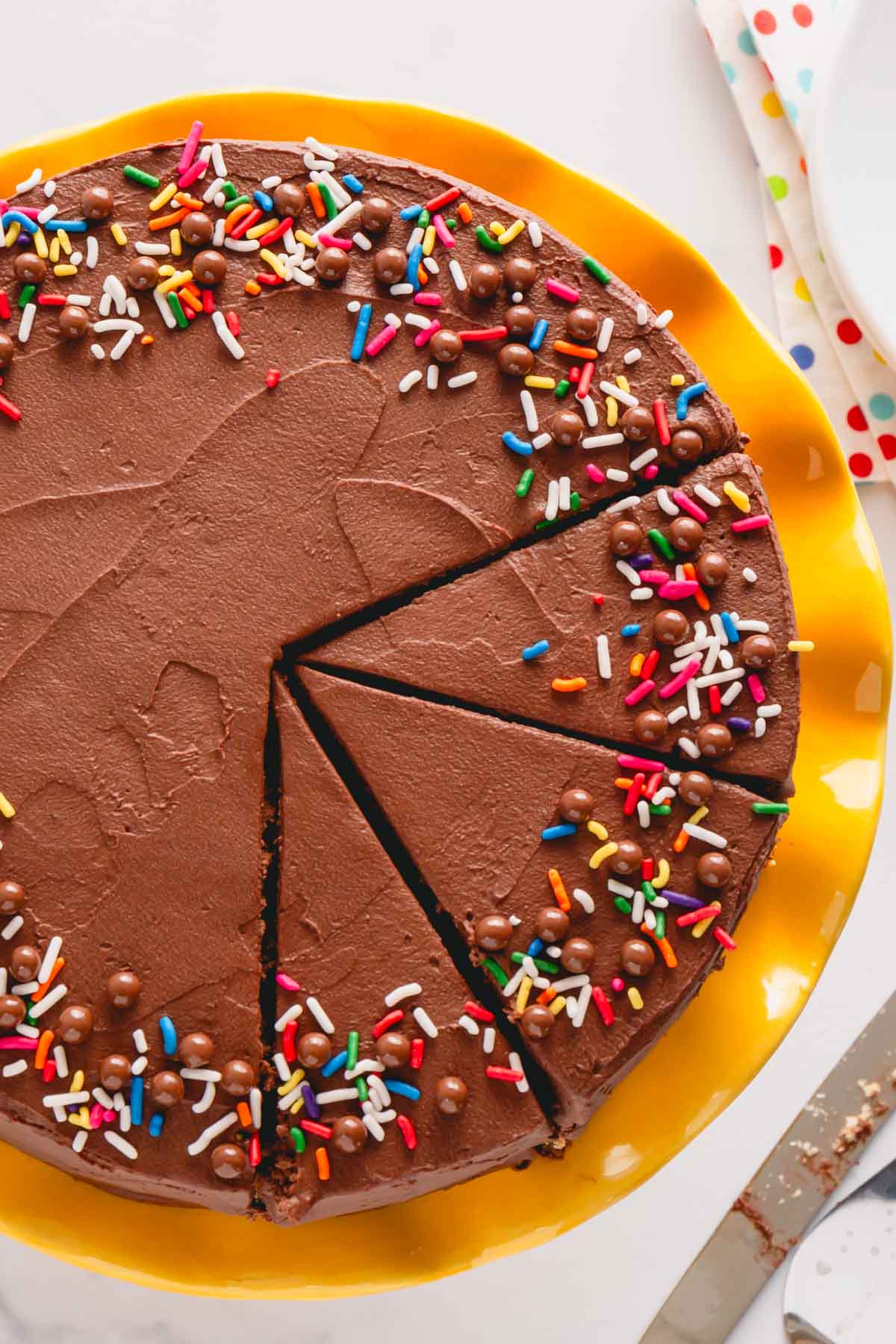
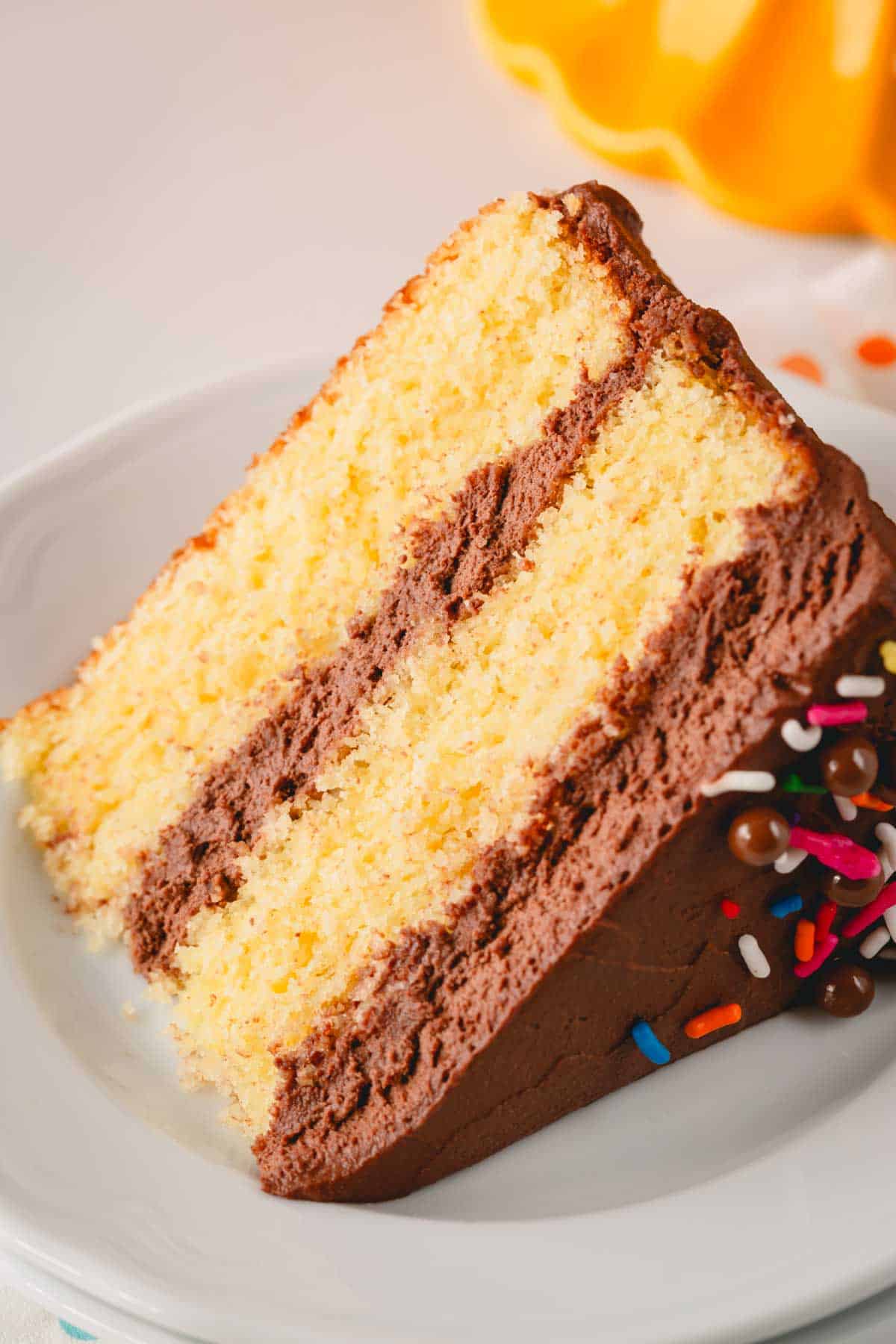
Recipe Testing Notes:
The perfect version of classic yellow cake does exist! After multiple rounds of testing, we settled on the best (and easiest) mixing method and flavor combination.
- Creaming method – The simpler technique and what we ultimately chose. This method produces an unbelievably light and fluffy texture!
- Whipped egg white method – Also known as the chiffon mixing method or meringue. We didn’t notice any improvement in the cake’s texture with the addition of whipped egg whites.
- Flavor – Butter extract is a game-changer for rich, buttery flavor!
What is the creaming method?
The creaming method involves beating butter and sugar together at a high speed until the mixture is light, fluffy, and pale yellow in color. Using this method:
- Incorporates as much air as possible into the batter.
- Ensures the cake rises well.
- Helps the sugar dissolve, resulting in a more tender cake.
Yellow Cake vs Vanilla Cake vs White Cake:
Yellow, vanilla, and white cakes may appear similar at first, but they actually have significant differences.
- Yellow cake – Classic yellow cake recipes are made with additional egg yolks, which gives the cake a deep yellow color and rich flavor.
- Vanilla cake – This type of cake is made with whole eggs (both the egg yolks and egg whites). This results in a creamy white-colored cake with a subtle vanilla flavor.
- White cake – White cake contains only egg whites, resulting in a stark white cake with a light and delicate flavor.
Key Ingredient Notes:
- All-purpose flour – This easy yellow cake recipe doesn’t require any cake flour. All-purpose flour works perfectly! Trust me, we’ve tested this recipe with both.
- Baking powder – A leavening agent that helps the cake rise. For the best results, make sure your baking powder is fresh.
- Baking soda – This also helps the cake rise and, when combined with buttermilk, will produce the best light and fluffy texture in the cake!
- Kosher salt – A small amount of salt enhances the overall flavor of the cake. Kosher salt can be substituted with about ½ the amount of table salt if needed.
- Unsalted butter adds extra richness for the best flavor.
- Granulated sugar adds just the right amount of sweetness to the batter and plays crucial role in texture. Don’t reduce the sugar amount!
- Eggs – Whole eggs give the cake structure and help it rise, becoming tall and slightly fluffy.
- Egg yolks make the cake ultra-rich and tender, giving it a striking yellow color with a custard-like flavor.
- Vanilla extract adds depth of flavor without giving the cake an overpowering vanilla taste.
- Butter extract – My secret ingredient for a rich, buttery flavor that is quintessential taste from a box mix! If you can’t find butter extract at your local grocery store, you can purchase it online or at specialty food stores.
- Buttermilk adds a slightly tangy flavor that perfectly complements the sweetness of the cake. Buttermilk reacts with baking soda to help the cake rise.
- Frosting – If you want to make the best yellow cake recipe, I recommend covering it with this rich and creamy chocolate mousse frosting. You’ll need 1 full batch or 900 grams of frosting to cover 2 layer 8 or 9-inch cake.
for proper texture
Before you begin, allow all the ingredients to come to room temperature. This will make them much easier to mix and prevent you from overworking the cake batter!
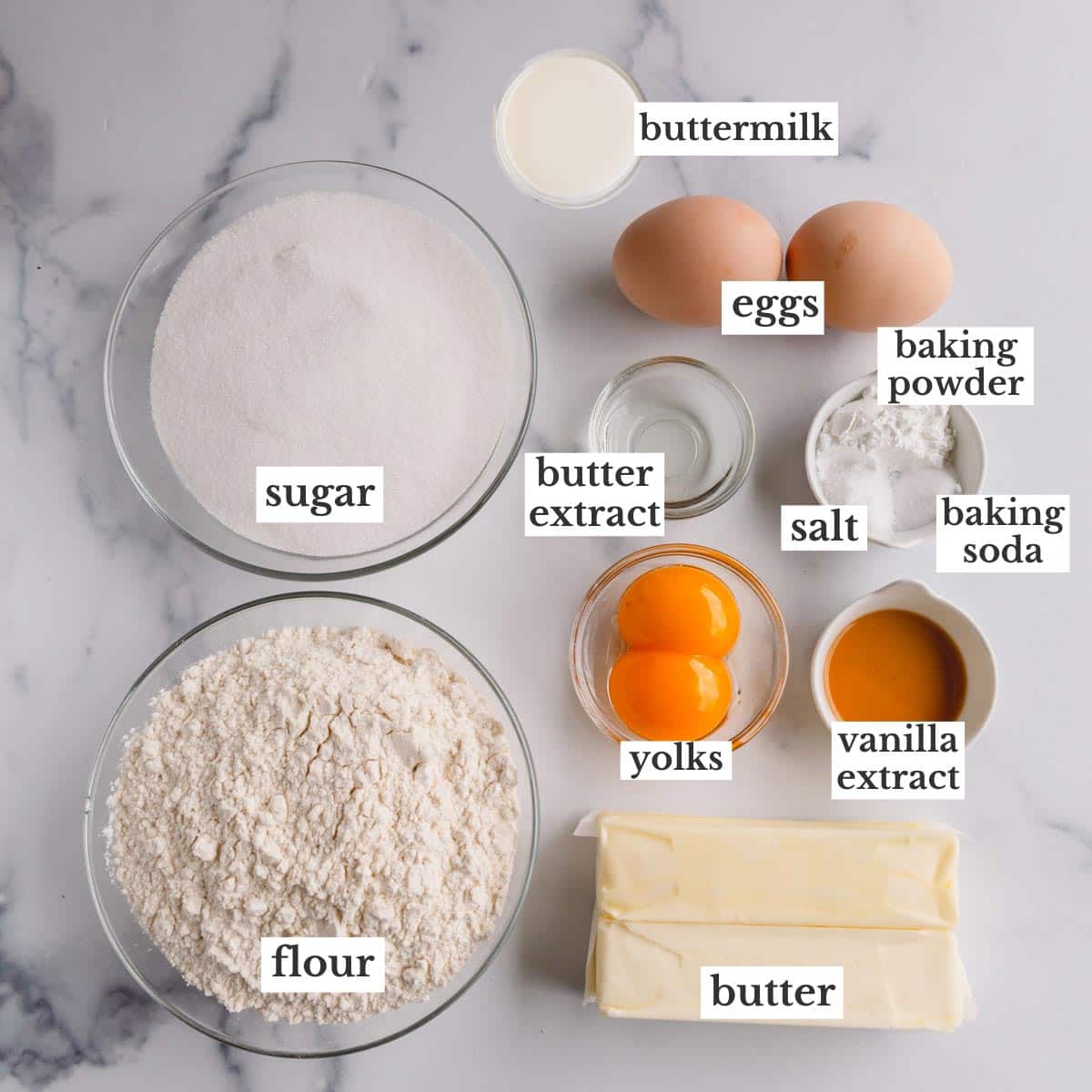
How to make this cake recipe:
Before you get started, preheat your oven to 350°F, and spray two 8-inch round cake pans with cooking spray. Line the pans with parchment paper (cut to fit), and spray the parchment with cooking spray as well.
1. Mix the yellow cake batter
- Whisk the flour, baking powder, baking soda, and salt together in a medium-sized mixing bowl.
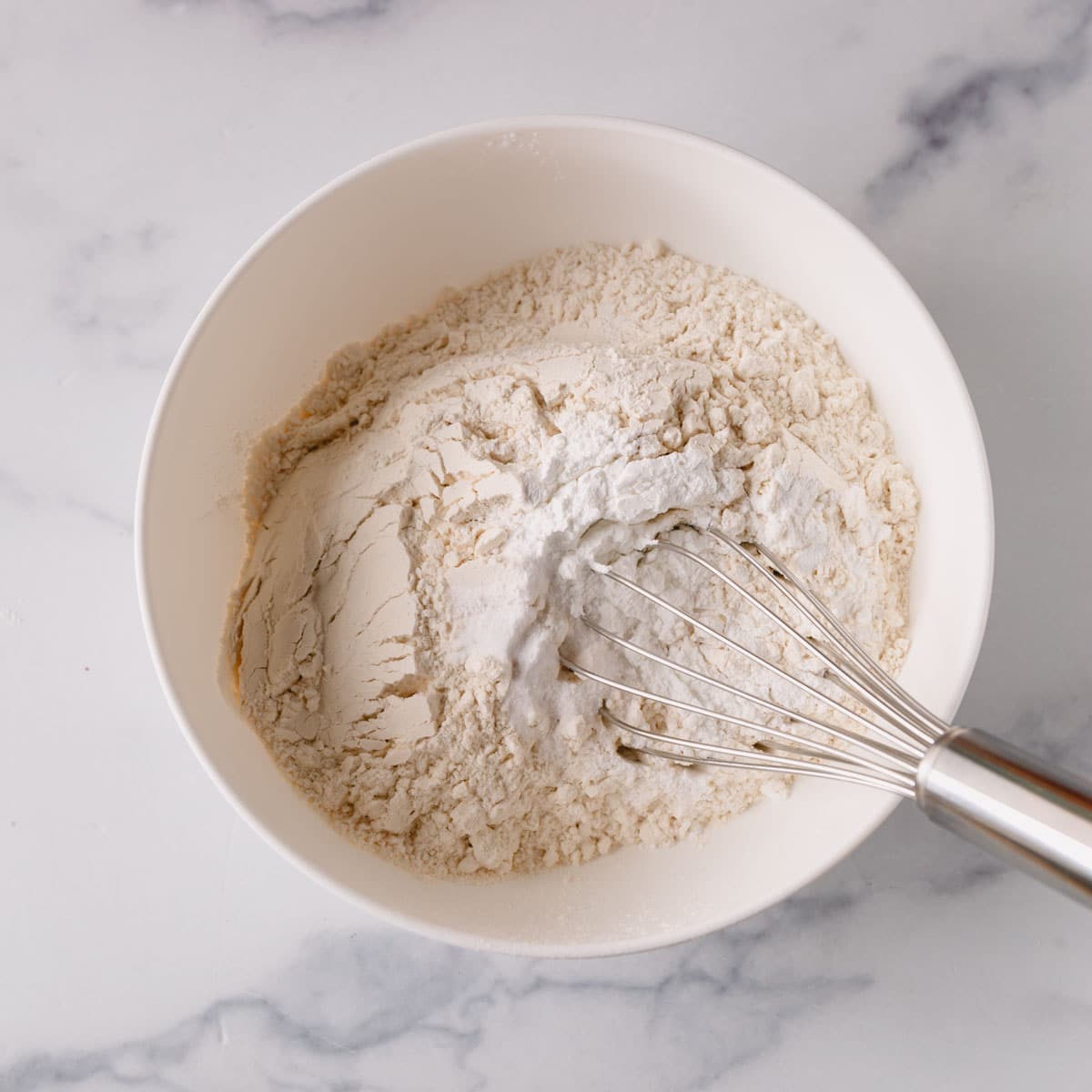
- In a separate mixing bowl, beat the butter and sugar on medium-high speed until fluffy, about 3-5 minutes, scraping the bowl with a silicone spatula halfway through the mixing time. Use a mixer fitted with the paddle attachment or a handheld electric mixer for this step!
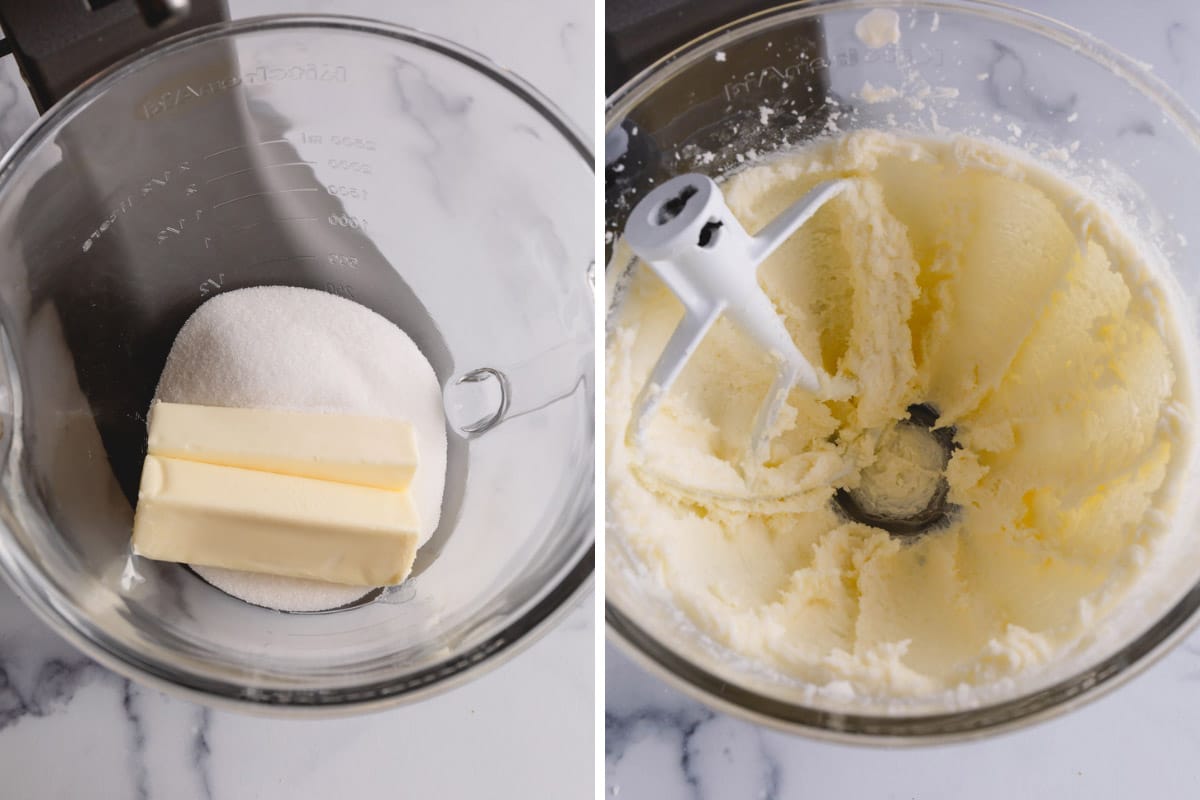
proper creaming method
To achieve bakery-style moist and fluffy cake, be sure to whip the butter and sugar long enough until the mixture is fluffy and pale in color. See the comparison image below.
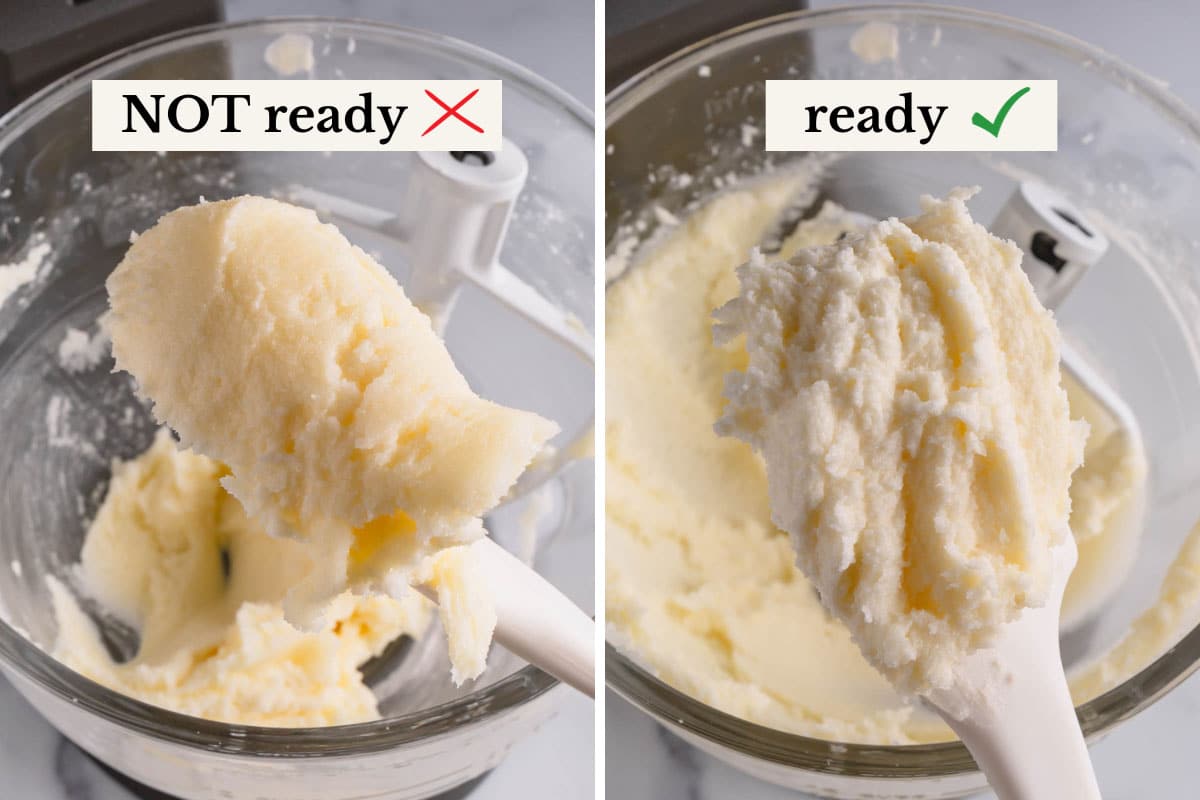
- Add the eggs, egg yolks, vanilla extract, and butter extract to the creamed butter and sugar, and mix on medium-high speed until well combined, about 1 minute.
- Add half of the flour mixture to the wet ingredients. Mix on low speed until just combined.
- Pour the buttermilk in, and continue mixing on low speed.
- Add the rest of the flour mixture, and mix until just combined, about 30 seconds. Don’t overmix!
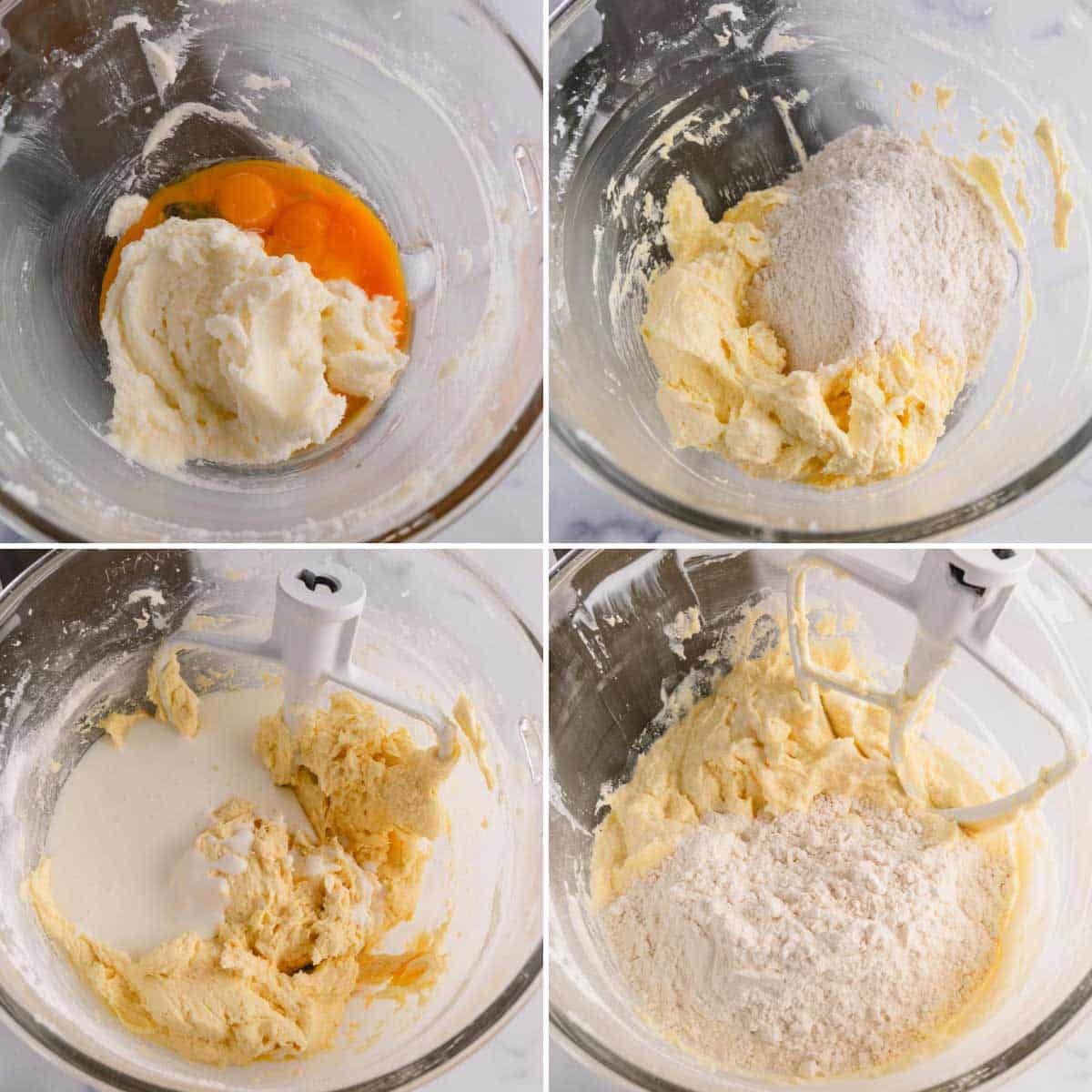
2. Bake the cakes
- Pour the batter into the prepared baking pans, dividing it evenly between them.
- Bake the cakes for 27 to 30 minutes, or until the cakes are golden and a toothpick inserted into the centers comes out clean.
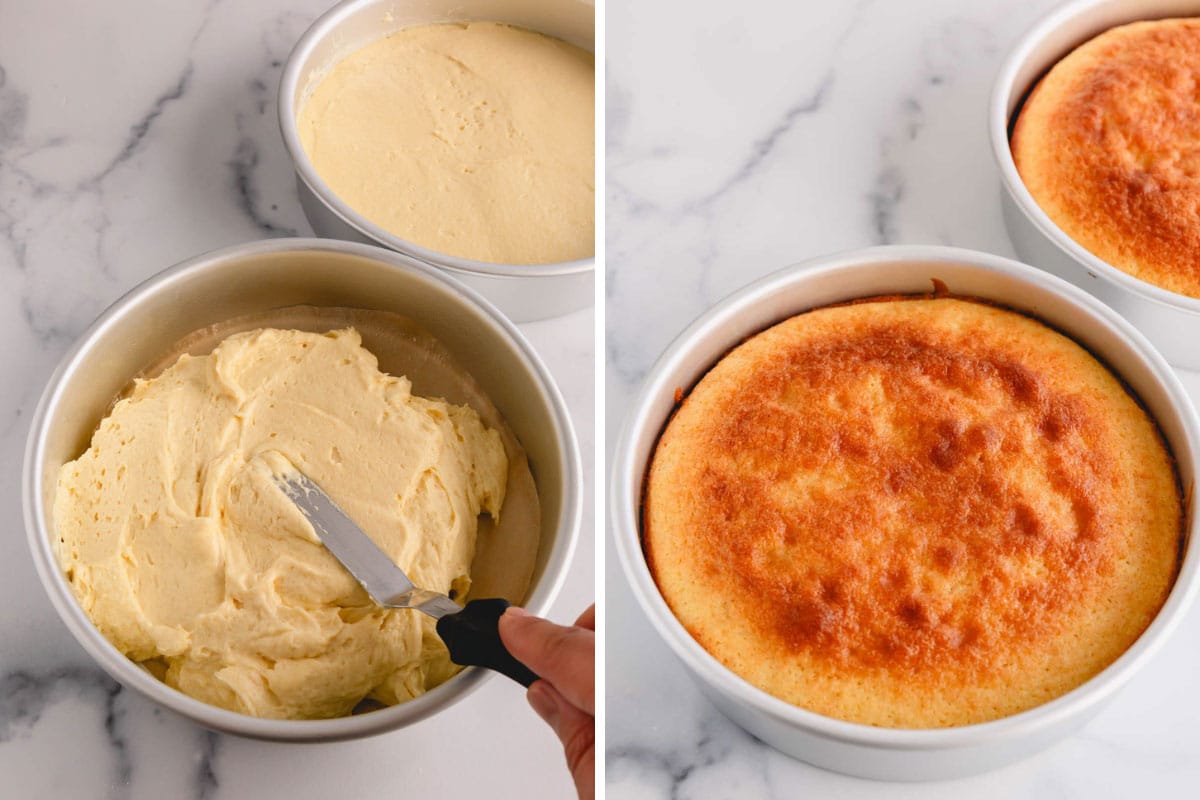
- Rest the cakes in the pans for 3 minutes.
- Loosen the edges with a knife, and invert the cakes onto a wire rack to cool completely.
3. Assemble and frost
- Level the cakes using a serrated knife. Your cake shouldn’t form a dome, but I still like to make sure they’re perfectly flat.
- Smear ⅓ of the frosting on the first cake layer.
- Place the second cake on top of the first layer.
- Frost the entire cake with the remaining chocolate mousse frosting.
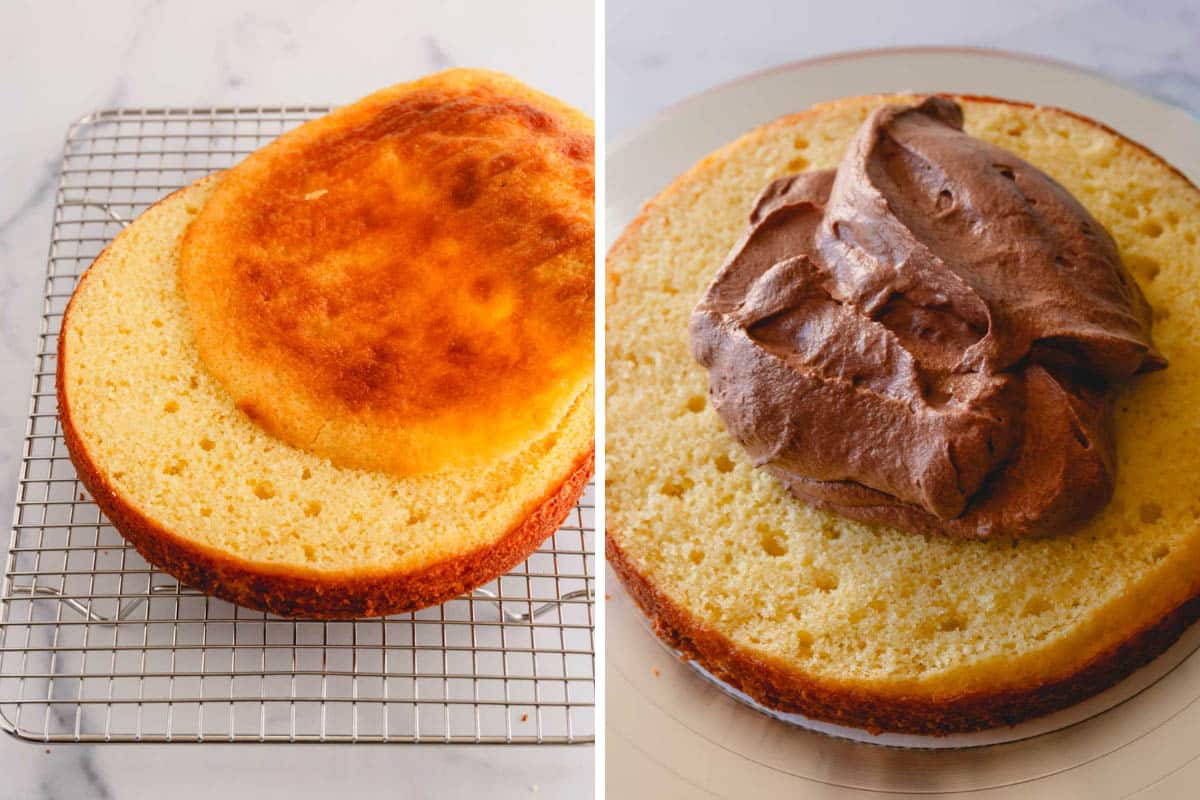
More Yellow Cake Frosting Ideas:
- Chocolate Swiss buttercream – You’ll need 1 full batch of this ultra-smooth meringue buttercream.
- Chocolate cream cheese frosting – 1 ½ batches are required if you choose this decadent and rich frosting.
- This classic yellow cake recipe is versatile, so you can choose any frosting you love! Just make sure you make a total of 900 grams.
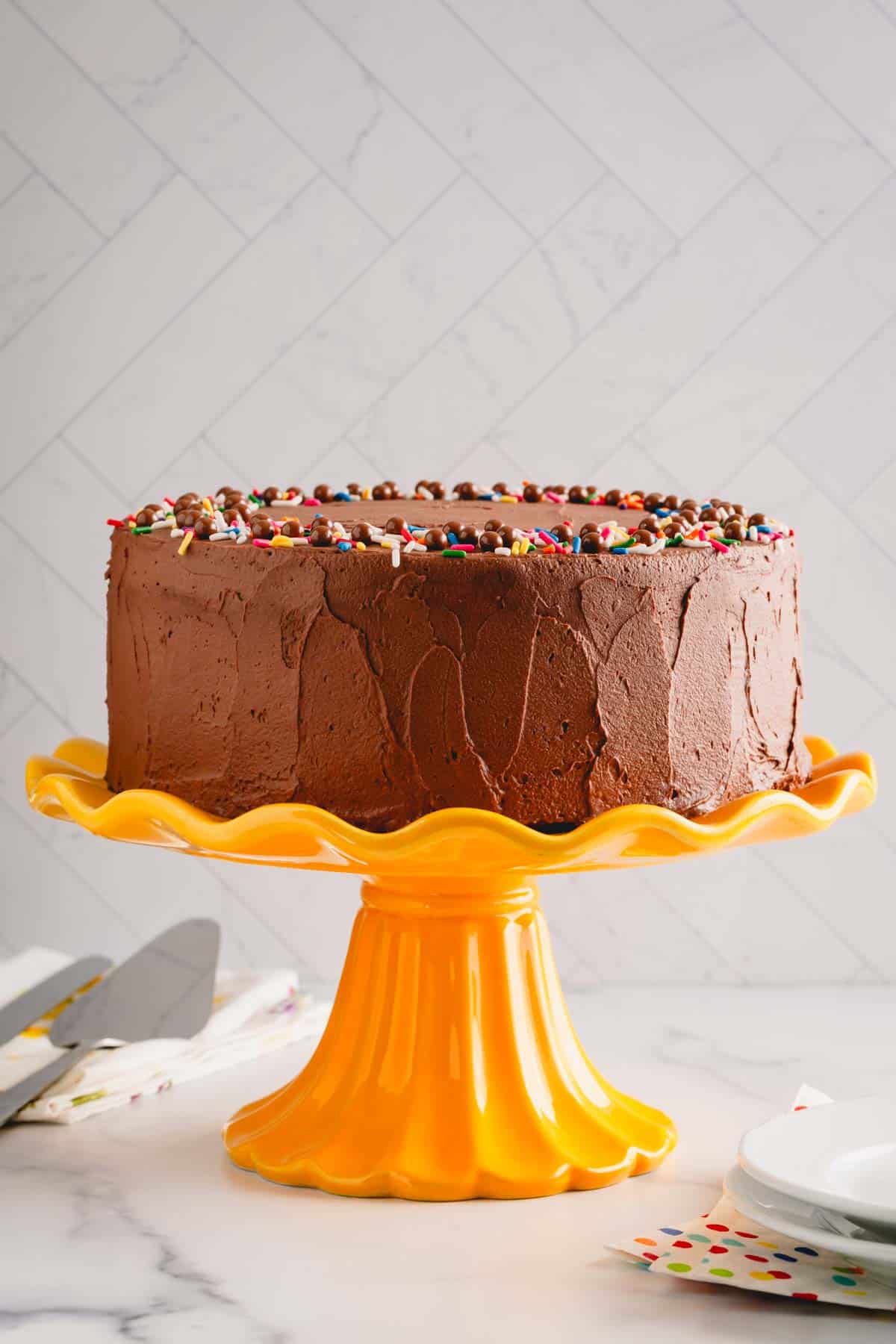
Tips for Success:
- Measure your flour accurately using a kitchen scale or the spoon and level method. Instead of scooping the flour directly from the bag, spoon it into a measuring cup, without compressing the flour. Then, level the top off with the back of a butter knife.
- Properly cream the butter and sugar. It takes at least 3 minutes of whipping at high speed to cream butter and sugar adequately.
- Avoid overmixing the batter. Overmixing results in a dense and tough texture.
- This yellow cake recipe can be made in two 9-inch baking pans. Start checking for doneness after 25 minutes of baking time.
- Never frost a warm cake; the frosting will melt right off! Wait for your cake to fully cool before adding any frosting.
Make-Ahead Tips:
- I recommend making this classic yellow cake recipe in advance! Chilled cakes are much easier to frost and slice.
- Wrap cooled cakes in plastic wrap, and refrigerate for up to 2 days. Or, store them at room temperature for up to 1 day.
- It’s best to make chocolate mousse frosting the day you plan on using it. However, it can be prepared up to 1 day in advance and stored in an airtight container in the fridge.
- Chocolate cream cheese frosting is a better make-ahead option, as it stores well in the fridge for up to 3 days!
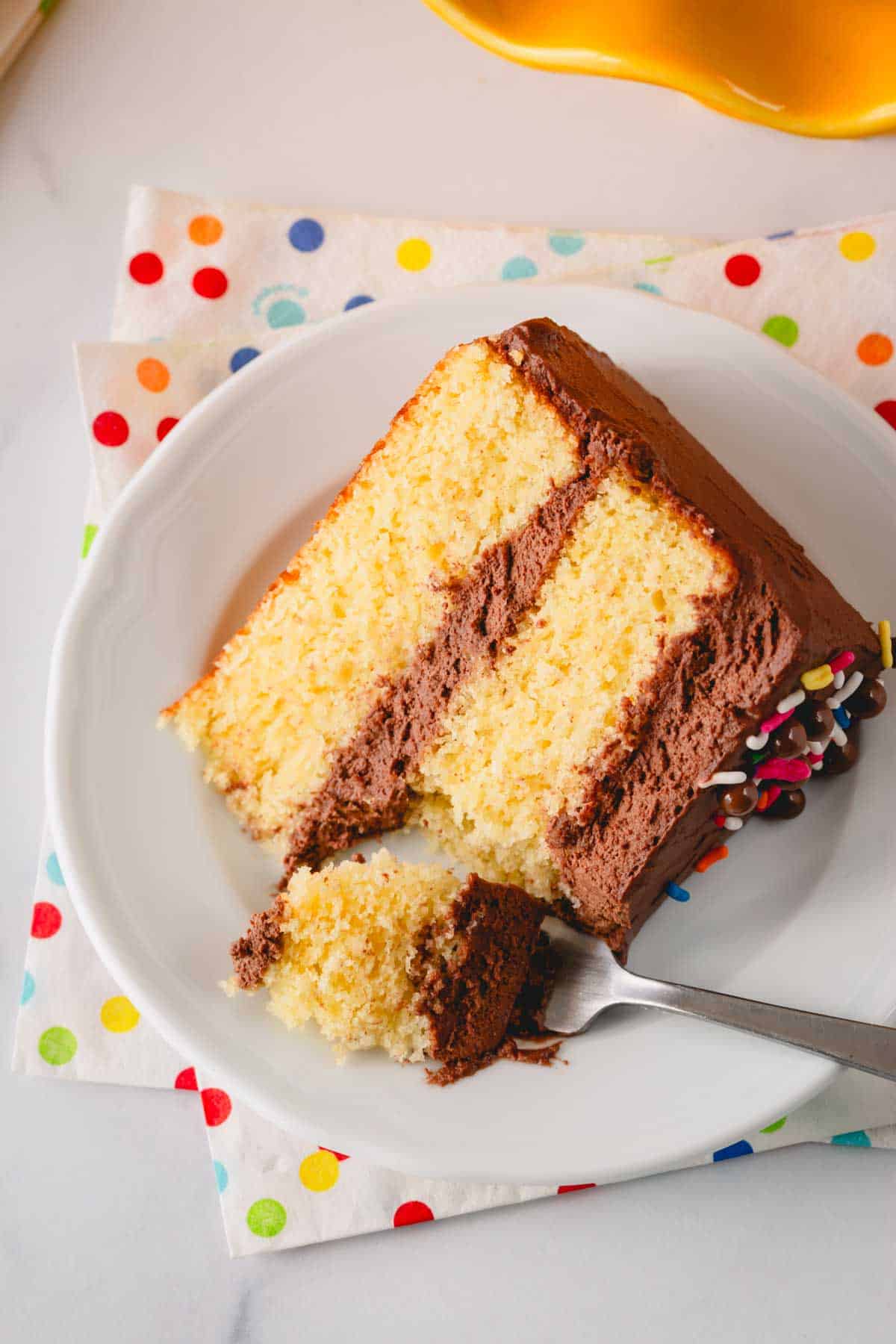
Storing Tips:
- Store the frosted cake in the refrigerator for up to 3 days. Cover it loosely in foil, or place it in an airtight cake container.
- Yellow cakes are freezer-friendly, too! Freeze unfrosted cake layers for up to 1 month. Before freezing a frosted yellow cake, ensure your chosen frosting is also freezer-friendly.
Yellow Cake FAQs:
I don’t recommend substituting buttermilk with any other type of milk, because the buttermilk activates the baking soda, which helps the cake rise. To create a buttermilk substitute, mix 1 cup of milk with 2 tablespoons of white vinegar or lemon juice. Then, let the mixture sit for about 5 minutes before adding it to the cake batter.
I strongly recommend adding the butter extract. I’ve tested this recipe countless times to perfect the flavor and texture. Butter extract is a game-changer; you’ll notice if it’s missing!
Yellow cakes have a rich butter flavor with a hint of vanilla. The egg yolks provide a custard-like taste and add to the decadence! You’ll often find them paired with chocolate frosting, but yellow cake lends itself well to various flavors.
More Cake Recipes:
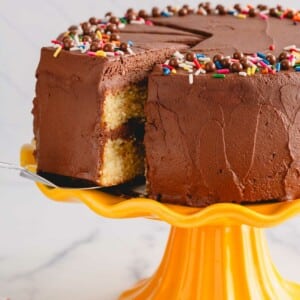
Classic Yellow Cake
Ingredients
- 2 cups (250 g) all-purpose flour Note 1
- 2 ½ teaspoons baking powder
- ¼ teaspoon baking soda
- ½ teaspoon coarse kosher salt
- 2 sticks (230 g) unsalted butter at room temperature
- 1 cup (300 g) granulated sugar
- 2 large eggs at room temperature
- 2 egg yolks
- 2 teaspoon pure vanilla extract
- 2 teaspoons butter extract
- 1 cup (240 ml) buttermilk at room temperature, Note 2
Frosting:
- 1 batch Chocolate Mousse Frosting Note 3
Equipment
- 2 8-inch (20cm) round cake pans
- 1 stand mixer (or hand mixer) fitted with a paddle attachment
- 1 Wire rack
- 1 Serrated knife
Instructions
To make the cake layers:
- Preheat the oven to 350°F (175°C).
- Spray two 8-inch (20cm) round cake pans with cooking spray. Line the pans with a parchment paper and spray the parchment paper lightly with cooking spray. (Note 4)
- In a medium bowl, whisk flour, baking powder, baking soda and salt.2 cups all-purpose flour, 2 ½ teaspoons baking powder, ¼ teaspoon baking soda, ½ teaspoon coarse kosher salt
- In a mixing bowl with paddle attachment, or using a handheld electric mixer, beat butter and sugar on medium high speed until fluffy, 3-5 minutes. Scrape the sides of the bowl halfway.2 sticks unsalted butter, 1 cup granulated sugar
- Add eggs, vanilla, and butter extracts and mix on medium high speed until well incorporated, 1 minute.2 large eggs, 2 egg yolks, 2 teaspoon pure vanilla extract, 2 teaspoons butter extract
- Add half of the flour mixture and mix on low speed until just combined.
- Add buttermilk and mix on low speed. Then add the remaining flour mixture and mix until just combined, about 30 seconds. Don’t overmix!1 cup buttermilk
- Divide the batter evenly into the prepared pans and smooth the tops. Bake the cake for 27-30 minutes, or until the cakes are golden and inserted toothpick comes out clean.
- Let the cakes rest in the pans for 3 minutes. If needed, loosen the edges with a knife and invert the cakes onto a wire rack to cool completely. (At this point, cake layers can be wrapped and stored at room temperature for up to 1 day, or frozen for up to 1 month.)
To assemble the cake:
- While this cake doesn’t tend to develop a dome, I still like to level the cake layers with a serrated knife.
- Smear 1/3 of the frosting on the first cake layer into an even layer. Place the second cake layer and cover the entire cake with the remaining frosting.1 batch Chocolate Mousse Frosting
- Store the frosted cake for up to 3 days in the refrigerator.
Tips & Notes
– To store the cake, cover it loosely in foil, or place it in an airtight cake container.
– Freeze unfrosted cake layers for up to 1 month. Before freezing a frosted yellow cake, ensure your chosen frosting is also freezer-friendly.
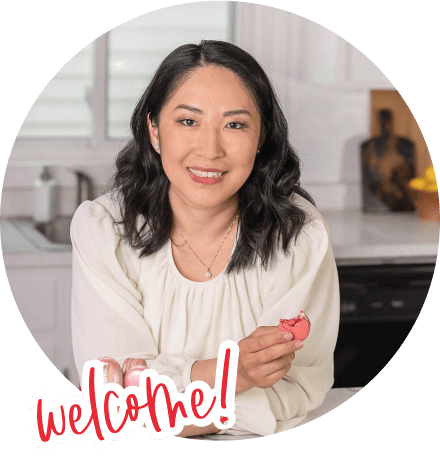
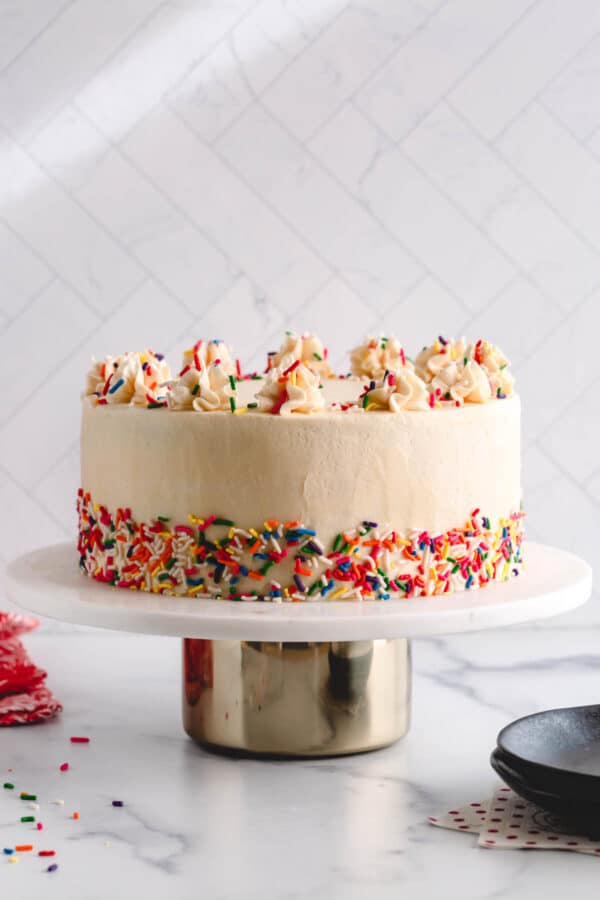
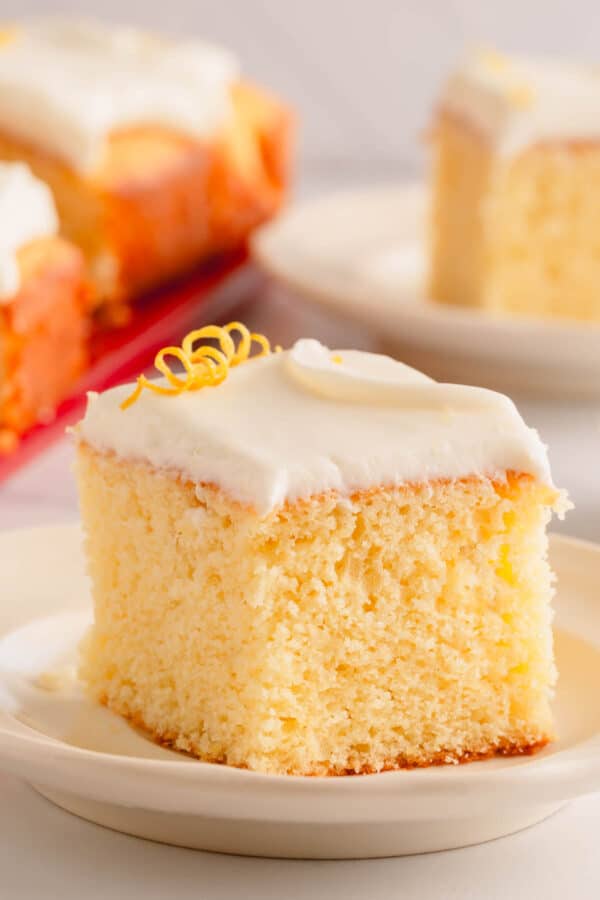
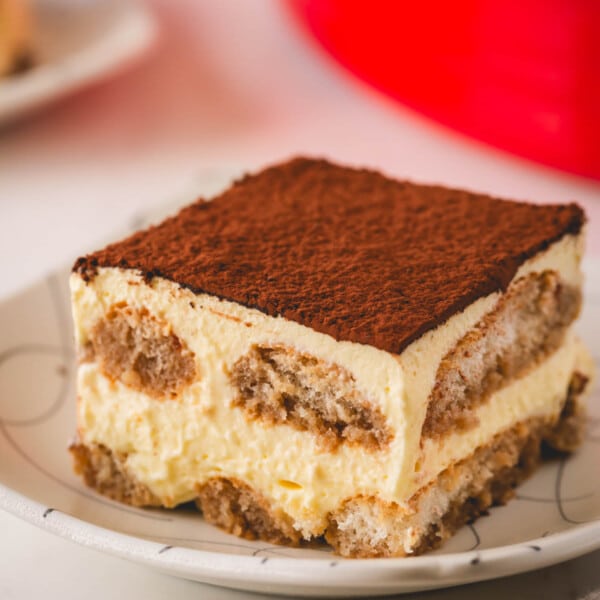
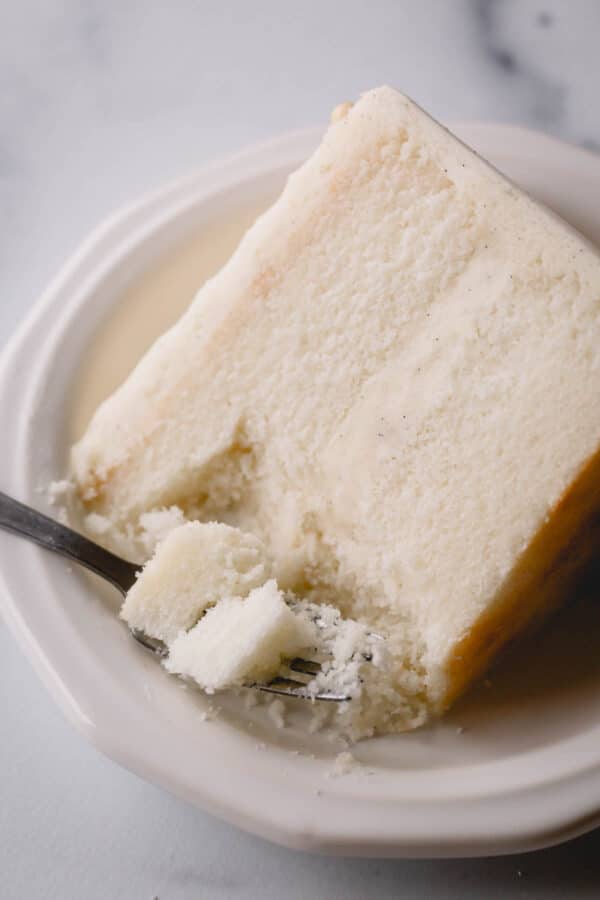

Hello! I tried this recipe yesterday. I made 18 cupcakes air-baked at 325 for 20 minutes. The texture came out a little corn-muffiny, and they were not as moist as I had hoped. When beating in the eggs, the batter looked a bit broken, but I’m not sure this was an indication of anything going wrong. Otherwise, I followed the directions. Actually folded the batter at the end vs beating on low to try to make sure I didn’t over mix. Any suggestions or recommendations? Thank you so much!
Hi, Diana. It sounds like your butter and eggs weren’t at the same temperature. When either butter or eggs are too cold, it causes the batter to curdle. And that makes a huge impact on the texture of the cake. The 2 biggest tips for the fluffy cake texture: 1. Beat the butter and sugar until nice and fluff for at least 3 minutes, ideally 5 minutes. 2. Make sure all the ingredients are at the same room temperature. Hope this helps. And thank you for your feedback.